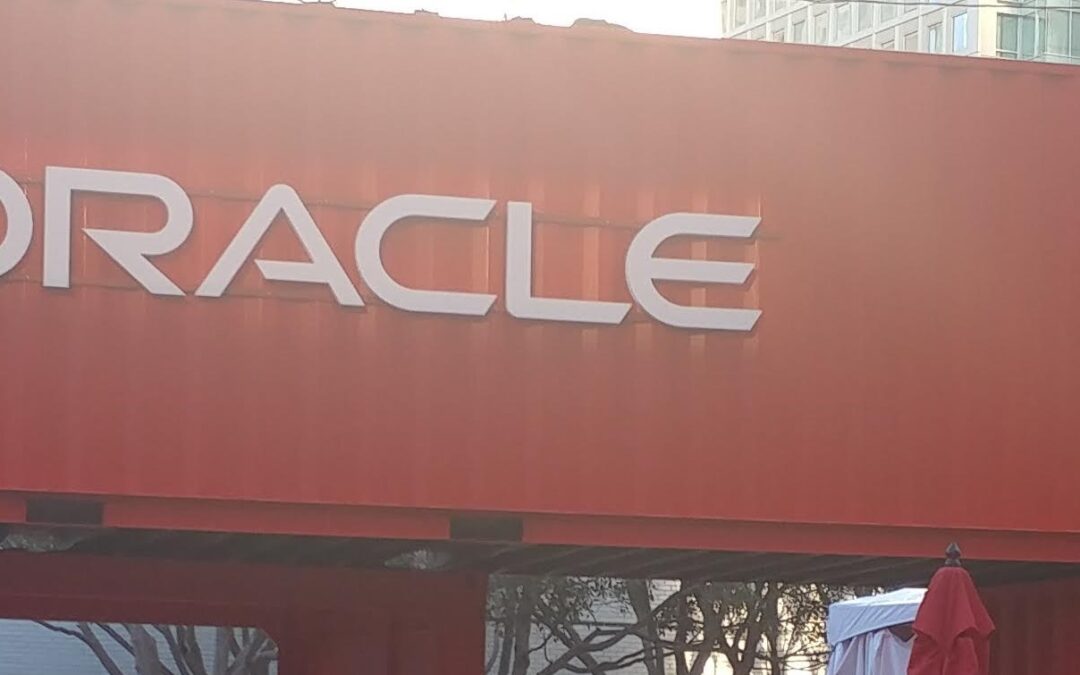This was my first time at Oracle OpenWorld, and WOW…. Oracle really goes overboard. They had massive banners and signs calling out the ‘Oracle Autonomous Database Cloud’, ‘Self-Repairing Database’, ‘Innovative’, it goes on and on. They laid out a literal red carpet, covering all of Howard Street between 3rd and 4th streets. It’s just impressive to see.

But, I was here to learn. Being an architect in the Integration realm (SOA, ICS, OIC, etc), I tried to focus on sessions that would pertain to me and hopefully learn a few new tricks. There were tons of sessions on everything Oracle, but only a handful interested me.
Along with learning about the Oracle (and non-oracle) products, I was able to meet up with many great colleagues from outside the US that I haven’t seen in a while, or only had the opportunity to communicate with through email or conferences calls.
Here is a small (I went to many sessions) breakdown of the ones I enjoyed.
Citizen Developer Self-Service Integration
The self-service integration cloud is intended to ’empower the business user’ by providing pre-built templates for application integrations. The idea is that a business user can connect the applications they use every day to share data or trigger other applications when an event occurs. These are not company wide integrations, but for a single user. The scenario that was discussed involved connecting Gmail with Google Sheets. When a business user creates a new contact in Gmail, that contact is immediately exported and added to a Google sheet. This didn’t seem like a very useful scenario, but I could see the data being sent to other applications, like creating the same contact in a different system.
The self-service integration cloud is currently licensed separately, but based heavily on the OIC platform. It looks very similar to OIC when building integrations. If you have any experience using OIC, the self-service integration will feel right at home. I’m always wary of when products are designed for the ‘citizen developer’ or ‘business user’ because these products typically have limited functionality (due to ‘ease-of-use’) or are actually harder than originally intended.Eduardo Chiocconi, Tuck Chang and Srikant Tirumalai did a great job demonstrating the features that have been developed and showed off some of the advanced use cases. I’m looking forward to exploring some more of the available options with this new(ish) product!
The Future of Serverless Is Now: CI/CD for the Oracle Fn Project
I spent quite a bit of time working with Leo Gonzalez from S&P Solutions on a previous engagement and was thrilled to reconnect with him at Oracle OpenWorld. He and his colleague Rolando Carrasco presented on the simplicity of deploying Oracle functions and provided a quick live demo starting and deploying a hello world function (Hola Mundo for them!) in a few different programming languages. These code sets were all changed during the demo and were all automatically deployed using a continuous integration pipeline. I have had limited exposure to the Oracle function, however, the presentation piqued my interest, with its simplicity. I’ll have to go back and check it out myself.
DevOps in the Cloud with Oracle Developer Cloud Service
Having some basic experience with DCS, I was interested to find what type of Hands-On Lab the Oracle team would come up with. The lab, meant to take under an hour, was surprisingly thorough. It had participants create a new project inside of DCS, initialize a GIT repository, create and assign development tasks, start a newsprint including development tasks, make a code change, create build triggers and a build pipeline, merge a feature branch, and watch it all get deployed. Abhinav Shroff and Murtaza Amiji did a great job preparing and presenting the lab.
Serverless, the Future of the Cloud?
I went to see Bert Ertman’s present on serverless integrations. After seeing an earlier presentation on Oracle functions, I was interested in what Bert had to say. He provided some interesting points calling out a variety of options for serverless… Amazon Lambda is one of the most prevalent. His presentation included a demo of using an event-based process, where the lambda function monitored an S3 bucket for images, and when a new image was uploaded, it would crop the image down to 100 x 100 pixels, and move to a different bucket. His use case was for adding employee images taken from a camera or phone, and cropping them down to be used as a thumbnail in a profile picture was perfect for a serverless integration. The processing power would only be used when necessary, and not require a company to keep an integration active, and only Pay As You Go (PAYGO).
Oracle Integration Cloud Best Practices Panel: Transforming to Hybrid Cloud
This presentation was based on actual implementations from 3 different companies.These companies included Minnkota Power Cooperative, ICU Medical, and GE. There was a short presentation by each of the companies, followed by some Q&A. With product management on hand, some great insight into new features was discussed to make the integration lifecycle easier, including whole environment cloning (all integrations, connections, lookups, etc). There were discussions about best-practices of how to promote integrations (shameless plug – AVIO Maven ICS Plugin) but also questions regarding the storing of integrations (and other artifacts) into a code repository for safe keeping.
When connecting OIC to on-prem applications, a connectivity agent is used. There were some questions and concerns regarding the stability of this, but Product Management indicated that the new version added HA, a smaller footprint, auto-updating, and several bug fixes. Be on the look for this if you are connecting on-prem applications to your cloud applications.

